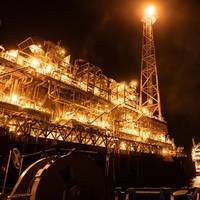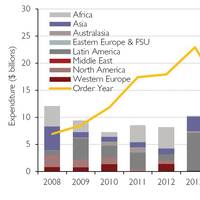The Evolving FPSO Landscape – Healthy Demand, Changing Procurement

After a slowdown in activity during 2020/2021 due to soft commodity prices, demand for FPSOs is picking up.With exploration hotspots like Namibia’s Orange Basin and the East Mediterranean delivering new finds, the FPSO market outlook is healthy. But shipyard capacity constraints are beginning to weigh on delivery, leading to cost concerns. Furthermore, FPSO demand is competing for yard space with other construction projects.To mitigate delay risk and cost overruns, some E&Ps have reviewed their FPSO procurement strategies.
MTS Houston Luncheon
The August MTS Houston Section luncheon will be held on August 22 and will feature a presentation by Carlos Mastrangelo, SBM Offshore’s Senior Vice-President on Floating Production Units. Over the years, the worldwide offshore industry has seen numerous oil & gas developments with operators focusing on mitigating reservoir risks. To address these inherent risks, operators aim at minimizing pre-investment by including the flexibility to adjust the facilities as needed. For many years we have seen Floating Production Units (FPUs) deployed as extended well test units, early production systems, or even phasing the exploitation development. Often, the key reality is how to address the reservoir uncertainties.
Floating Production

Douglas-Westwood forecast that between 2013 and 2017, $91bn will be spent on floating production systems (FPS) – an increase of 100% over the preceding five-year period. A total of 121 floating production units are forecast to be installed – a 37% increase. This growth is driven by multiple factors, such as a larger proportion of newbuilds and conversions compared to redeployments, a greater degree of local content which often results in a higher cost base and general offshore industry cost inflation.
Floating Production Expenditure set to Double

Douglas-Westwood forecast that between 2013 and 2017, $91bn will be spent on floating production systems (FPS) – an increase of 100% over the preceding five-year period. A total of 121 floating production units are forecast to be installed – a 37% increase. This growth is driven by multiple factors, such as a larger proportion of newbuilds and conversions compared to redeployments, a greater degree of local content which often results in a higher cost base and general offshore industry cost inflation.
ABS Tapped for West Africa Field Developments
Floating production is the system of choice for all deepwater developments off West Africa to date. The combination of no pipelines, huge reservoirs and benign climate conditions equals the use of floating production, storage and offloading or FPSO vessels. ABS has been tapped by Single Buoy Mooring (SBM), the contractor of ExxonMobil, to provide classification and certification services, including condition assessment of tankers, technical design review, surveys during refurbishment, conversion and hook-up and commissioning for three FPSOs for installation offshore West Africa. These FPSOs will be operated by Esso Deepwater Ltd., a subsidiary of ExxonMobil.
ABS Offshore Tapped for West Africa Field Developments
Floating production is the system of choice for all deepwater developments off West Africa to date. reservoirs and benign climate conditions equals the use of floating production, storage and offloading or FPSO vessels. installation offshore West Africa. a subsidiary of ExxonMobil. The Esso project is known as Early Production Systems or EPS and SBM has the contract for the design, procurement and construction of the trio of FPSOs with ABS as the classification society of record. Singapore and Dubai. Certificate on behalf of the Bahamas Flag administration. FPSO Falcon. the Yoho field offshore Nigeria at 60m. water depth. capable of producing 100,000 barrels per day of oil and 100 MMscfd of gas. The conversion was scheduled to be completed in July 2002. FPSO Eagle.





